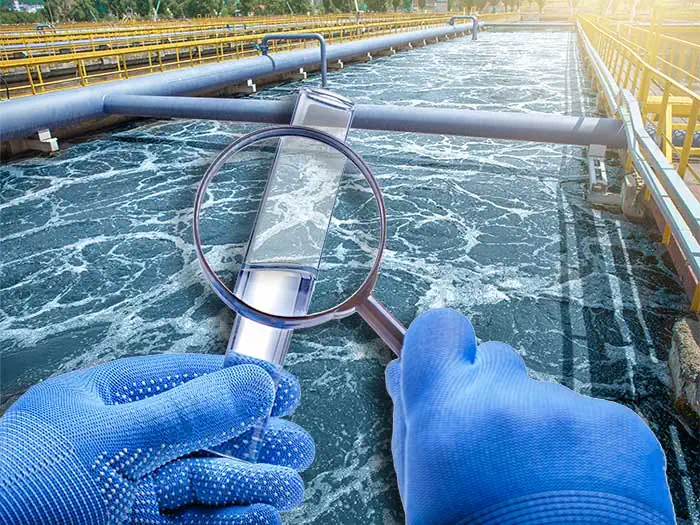How PFAS Therapy Guarantees Tidy and Sustainable Water
The existence of PFAS, commonly understood as "for life chemicals," positions substantial difficulties to water top quality and public health. The implications of these therapies prolong past instant wellness advantages; they raise critical questions about lasting water monitoring techniques that must be resolved to ensure a resilient future.

Recognizing PFAS Contamination
PFAS, or per- and polyfluoroalkyl compounds, have actually emerged as a substantial ecological worry as a result of their widespread frequency and determination in the environment. These synthetic chemicals have been utilized in numerous industrial applications and consumer items, including non-stick kitchenware, water-proof garments, and food packaging, as a result of their one-of-a-kind homes such as water and grease resistance.
The contamination of soil and water resources by PFAS takes place mostly via commercial discharges, firefighting foam usage, and seeping from land fills. pfas management. When launched, these compounds are immune to degradation, bring about their build-up in the environment. This determination elevates critical problems, as PFAS can travel fars away with groundwater and surface water systems, affecting alcohol consumption water products and environments

Wellness Dangers of PFAS
The determination of PFAS in the setting increases significant health issues for people subjected to these substances. Research study has connected PFAS direct exposure to various damaging health results, consisting of immune system dysfunction, liver damage, and enhanced risk of particular cancers cells.
The universality of PFAS in consumer items, such as non-stick cookware, water-repellent textiles, and food packaging, more magnifies the risk of direct exposure. Drinking water infected with PFAS is a considerable worry, as these chemicals can leach right into groundwater sources. At risk populations, consisting of children and those living near commercial sites, may face intense risks as a result of their developing systems and prospective for higher direct exposure degrees.
As recognition of these wellness risks continues to expand, regulatory agencies are starting to develop standards for PFAS degrees in alcohol consumption water. Public health campaigns are vital to minimize direct exposure and shield areas from the lasting results of these dangerous substances.

Ingenious Treatment Technologies
How can we effectively tackle the obstacles presented by PFAS contamination in water sources? Cutting-edge treatment innovations are becoming vital services in the pursuit for clean water. These techniques concentrate on the removal or devastation of per- and polyfluoroalkyl substances (PFAS), which are well-known for their persistence in the atmosphere.
One encouraging method is adsorption making use of pop over to this site sophisticated products, such as triggered carbon and ion exchange materials. These products have revealed efficiency in catching PFAS particles from water. An additional noteworthy innovation is membrane layer filtration, which uses nanofiltration and turn around osmosis to separate address pollutants at the molecular degree, therefore supplying a barrier versus PFAS.
In addition, advanced oxidation procedures (AOPs) employ strong oxidants to break down PFAS compounds right into safe results. This method is particularly effective for dealing with very polluted water sources. Bioremediation methods, using specific microbes, are additionally being explored to degrade PFAS.
As research proceeds, crossbreed systems that incorporate numerous technologies may provide improved performance, resolving the intricacies of PFAS contamination. The growth and execution of these cutting-edge treatment technologies are vital steps toward guaranteeing the security and sustainability of our water resources.
Benefits of Effective PFAS Therapy
Effectively dealing with PFAS contamination in water resources substantially enhances public wellness and environmental safety and security. PFAS, usually described as "forever chemicals," are immune to deterioration and can accumulate in the body, causing major wellness dangers such as cancer, liver damages, and immune system disorder. By carrying out efficient treatment techniques, communities can lower exposure to these harmful compounds, ultimately boosting the health end results of their populations.
In addition, successful PFAS therapy adds to the conservation of local ecosystems. Contaminated water can adversely influence aquatic life and interfere with the delicate equilibrium of neighborhood habitats. By making certain clean water, therapy procedures safeguard biodiversity and maintain ecological honesty.
Additionally, efficient PFAS removal can foster public confidence in water high quality. When areas are assured that This Site their drinking water is cost-free from damaging impurities, it advertises a sense of security and wellness. This trust fund is important for neighborhood involvement and assistance for ongoing water management efforts.
Future of Water Sustainability
In the middle of expanding issues regarding water high quality and deficiency, the future of water sustainability depends upon innovative methods and collective initiatives. As areas encounter the impending threats of impurities like PFAS, the growth of advanced treatment innovations is crucial. These innovations not only concentrate on the elimination of harmful substances however likewise promote the reuse and recycling of water, consequently lowering total need.
In addition, reliable water administration plays a crucial role in ensuring sustainable practices. Policymakers need to incorporate scientific study with governing frameworks to establish clear guidelines for water use and therapy. Stakeholder engagement, including neighborhood areas and markets, cultivates a feeling of shared duty and urges lasting techniques throughout various sectors.
Investment in framework is also crucial; updating aging systems to incorporate modern-day filtering and purification techniques can substantially boost water high quality. In addition, welcoming eco-friendly technologies, such as all-natural filtering systems, can provide eco-friendly remedies.
Eventually, the future of water sustainability hinges on an alternative approach that incorporates technology, plan, and community participation. By focusing on these aspects, we can guard our water resources for generations ahead, ensuring tidy and sustainable water for all.
Final Thought
In conclusion, the effective treatment of PFAS is vital for making sure tidy and lasting water. Eventually, robust PFAS therapy strategies contribute to long-term resilience in water management, promoting public depend on in water high quality and promoting sustainable practices.